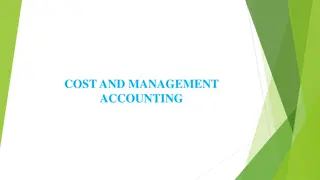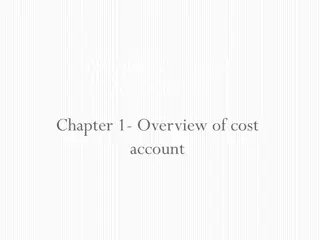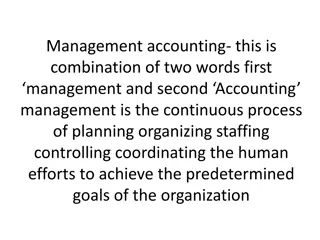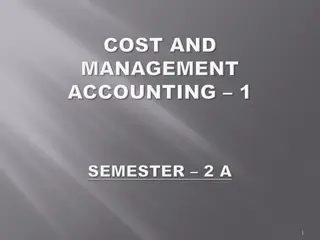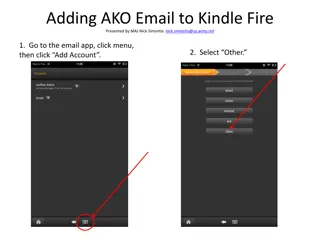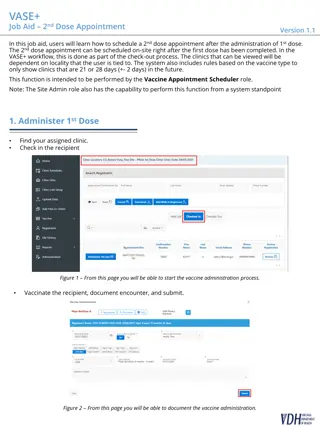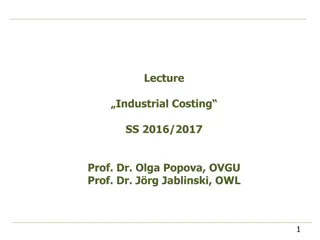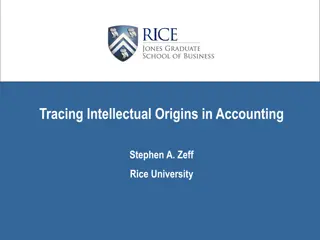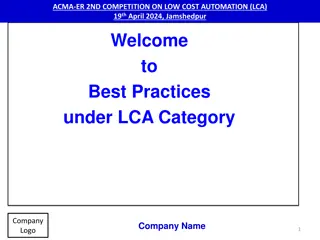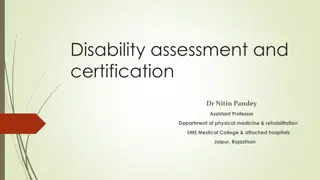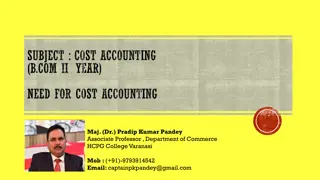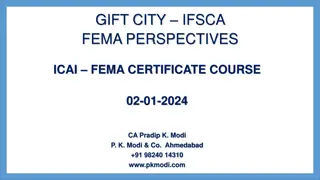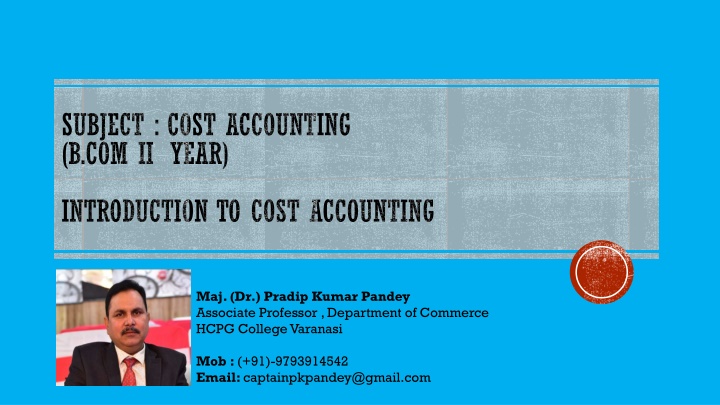
Introduction to Cost Accounting in B.Com II Year
Explore the key concepts of cost accounting, including costing techniques, cost accounting processes, and the differences between costing and cost accounting. Learn about the nature, scope, and methods of cost accounting, essential for understanding the financial aspects of businesses. Dive into topics such as cost control, labour accounting, overheads, and cost ascertainment. Delve into the syllabus covering unit costing, job costing, and more to gain a comprehensive understanding of cost management in commerce.
Download Presentation

Please find below an Image/Link to download the presentation.
The content on the website is provided AS IS for your information and personal use only. It may not be sold, licensed, or shared on other websites without obtaining consent from the author. If you encounter any issues during the download, it is possible that the publisher has removed the file from their server.
You are allowed to download the files provided on this website for personal or commercial use, subject to the condition that they are used lawfully. All files are the property of their respective owners.
The content on the website is provided AS IS for your information and personal use only. It may not be sold, licensed, or shared on other websites without obtaining consent from the author.
E N D
Presentation Transcript
SUBJECT : COST ACCOUNTING (B.COM II YEAR) INTRODUCTION TO COST ACCOUNTING Maj. (Dr.) Pradip Kumar Pandey Associate Professor , Department of Commerce HCPG College Varanasi Mob : (+91)-9793914542 Email: captainpkpandey@gmail.com
SYLLABUS : UNIT I Nature and Scope of Cost Accounting, Cost Vs. Management Accounting, Elements of Cost and their Classification, Methods and Techniques, Installation of Costing System, Concept of Cost Audit. Accounting for material: Material Control, Techniques, Pricing of material issues, Treatment of material losses. UNIT II Accounting for Labour: Labour Cost Control, Procedure, Labour Turnover, Idle Time and Overtime. Methods of Wage Payment-Time and Piece rates, Incentive Schemes. Accounting for Overheads: Classification and Departmentalization, Absorption of Overheads, Determination of Overhead rates, Under and Over Absorption and its treatment UNIT III Cost Ascertainment: Unit Costing Job Costing, Batch Costing, Contract Costing. UNIT IV Operating Costing, Process Costing, Cost Records: Integral and non-Integral System; Reconcilation of Cost and Financial Accounts.
KEY CONCEPTS: Costing: It is a technique and process of ascertaining costs. This technique consist of principles and rules which govern the procedure of ascertaining the cost of products and services. The process of costing includes routines of ascertaining costs by following different techniques like historical or conventional costing, standard costing and marginal costing. Thus costing simply means cost finding by any process. It consist of principles and rules which are used for determining : 1. The cost of manufacturing a product 2. The cost of providing a service Cost Accounting: It is a formal system of accounting for costs in the books of account by means of which cost of services and products are ascertained and controlled. An authoritative definition of cost accounting has been given by The Chartered Institute of Management Accountants (CIMA) of UK as follows: Cost Accounting is the process of accounting for costs from the point at which expenditure is incurred or committed to the establishment of its ultimate relationship with cost centres and cost units. In its widest usage, it embraces the preparation of statistical data, the application of cost control methods and ascertainment of profitability of activities carried out or planned. Cost Accountancy: It is a very wide term. It means and includes the principles, conventions, techniques and systems which are employed in a business to plan and control the utilization of its resources. It is simply means the science, art and practice of cost accountant.
DIFFERENCES : Basis of Distinction Costing Cost Accounting Nature It is a technique and process of ascertaining costs It is regarded as a specialized branch of accounting Costing technique includes principles and rules which govern the procedure of ascertaining the cost of product/services It involves classification, accumulation, assignment and control of costs Scope The process of costing consists of routines of ascertaining costs by historical or conventional costing, standard costing or marginal costing It involves establishment of budgets, standard costs or actual costs of operation, classification, recording and appropriate allocation of expenditures Process
OBJECTIVES AND FUNCTIONS OF COST ACCOUNTING The main objectives of cost accounting are as follows: 1. Ascertainment of Cost: This is the primary objective of cost accounting. In other words the basic objective of cost accounting is to ascertain the costs of product and services. For cost ascertainment different techniques and system of costing are used in different industries. 2. Control and reduction of cost: Cost accounting aims at improving efficiency by controlling and reducing cost. This objective is becoming increasingly important because of growing competition. 3. Guide to Business Policy: It aims at serving the needs of the management in conducting the business with utmost efficiency. Cost data provide guidelines for various managerial decisions like make or buy, selling below cost, utilization of idle plant capacity. 4. Determination of selling price: It provides cost information on the basis of which selling price of products or services may be fixed. In periods of depression, cost accounting guides the extent to which selling prioces should be reduced to meet the situation. 5. Measuring and improving performance: Cost accounting measures efficiency by classifying and analysing cost data and then suggest various steps in improving performance so that profitability is increased.
ADVANTAGES OF COST ACCOUNTING Main advantages of cost accounting are highlighted below: 1. Helps in adverse periods: Cost accounting helps in the periods of economic recession, trade depression and trade depression and trade competition. 2. Price fixation, Floating tenders, Quotation: It plays a vital role in fixing the price of a product, services or process. 3. Maximize profits: It helps in maximizing the profit by choosing the apt approach for its production. Non profitable lines may be avoided. 4. Facilitates Comparison: Cost records provide data to compare different periods, which in turn helps the management to take future course of action promptly. 5. Inventory Control: Costing helps to a great extent with respect to control of stock of raw material. 6. Increasing Productivity: Productivity of material and labour is inevitable for any organisation to attain growth and expansion. 7. Enhancing efficiency: As costs are determined at each stage, wastages can be detected and remedial measures can be taken without delay.
LIMITATIONS OR OBJECTION AGAINST COST ACCOUNTING Despite the fact that the development of cost accounting is one of the most significant steps to improve performance, certain objections are raised against its introduction. These are as follows: 1. It is unnecessary: It is argued that maintenance of cost records is not necessary and involves duplication of work. This may be true but in present world of competition, to conduct a business with utmost efficiency the management should be aware of detailed cost information for decision making which is possible only through cost accounting. 2. It is expensive: It is pointed out that the installation of a costing system is quite expensive which only large concerns can afford. However it should be said that costing system should be treated as an investement and the benefits derived from it must exceeds the amount spent on it. 3. It is inapplicable: Another argument sometimes put forward is that modern methods of costing are not applicable to many types of industry. This pleas is not very apt. A costing system must be specially designed to meets the needs of the business. In the fact the application of costing are very wide. 4. It is a failure: The failure of costing system is something put forward as an argument against its introduction in other undertakings. This is a very fallacious argument. It is sometimes wrong to jump to conclusion without the probe that the system is faulty. In order to make the systems a success, the utility of the system is also explained and the co-peration of employees should be sought by convincing them.

